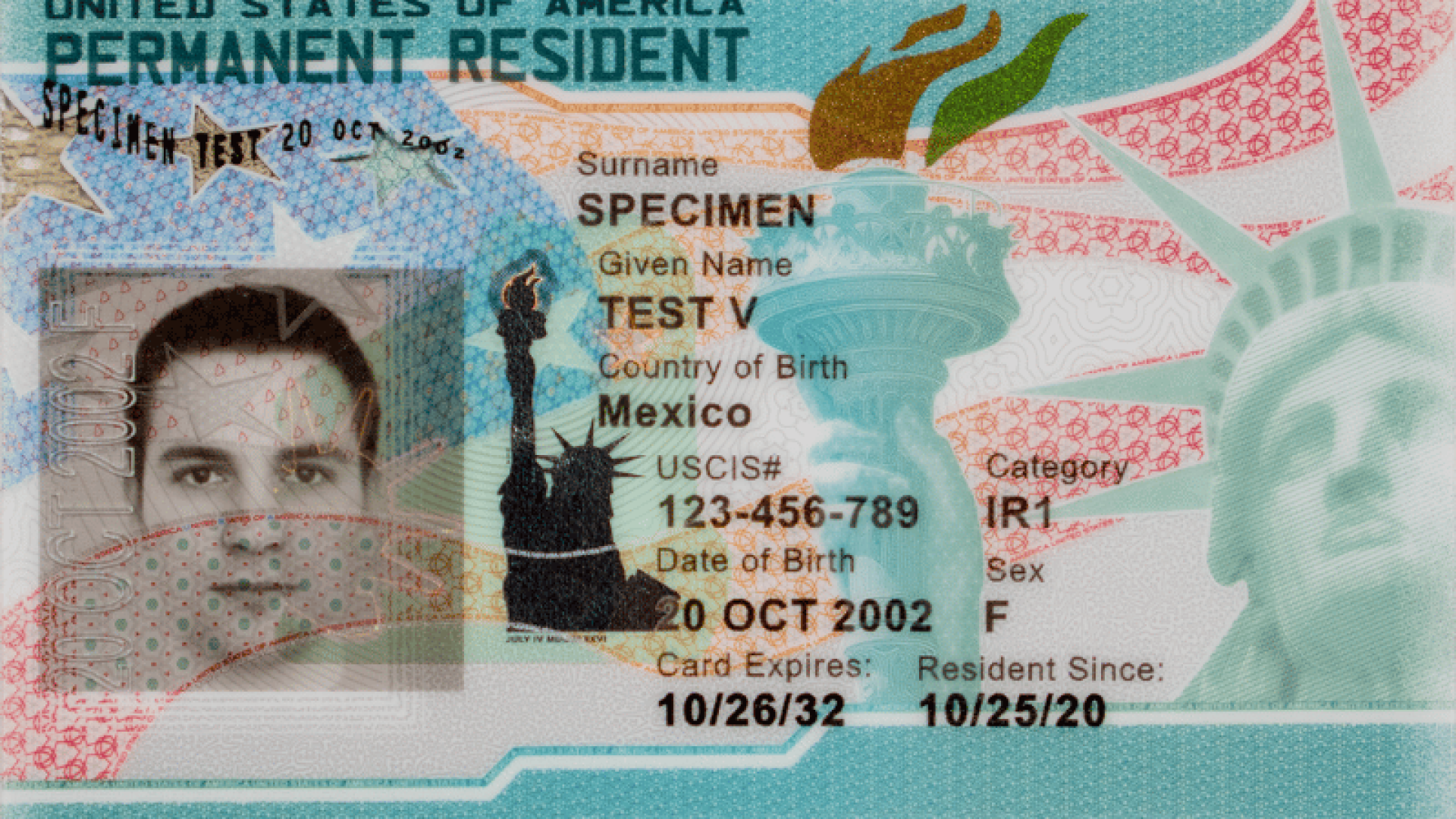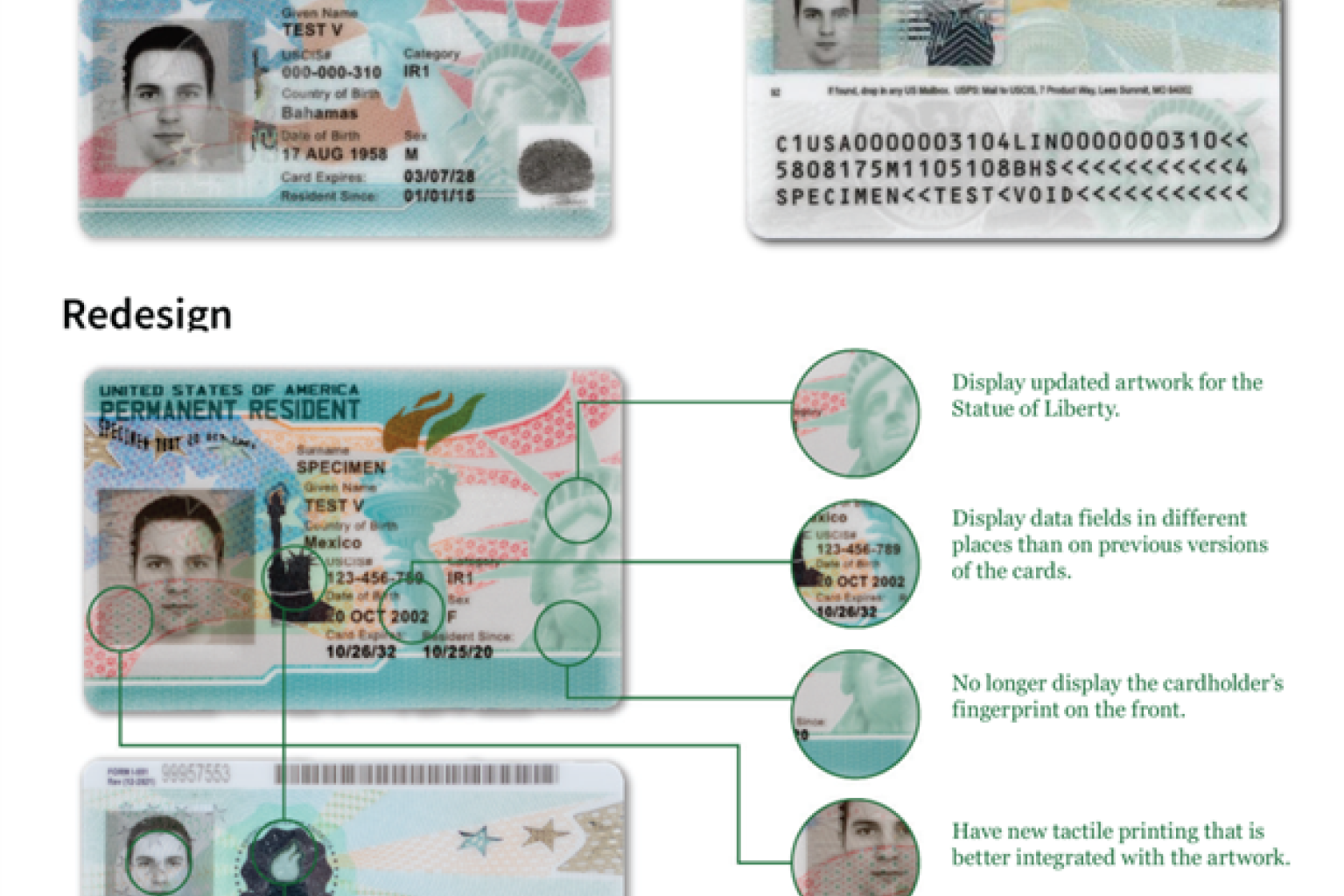Updated on 07.03.2023
Share article:

The U.S. Citizenship and Immigration Services (USCIS) announced the Introduction of new Permanent Resident Cards (Green Cards) and Employment Authorization Documents (EADs) The redesigned cards will be issued beginning January 30, 2023, and incorporate state-of-the-art technology to ensure national security and improve service to customers.
The new Green Cards and EADs will have more detailed graphics and improvements to holographic images. The arrangement of the data fields will also change compared to the old cards.

Just a few months ago, the USCIS announced a new design for its immigrant and nonimmigrant visaswhich not only have a new look, but are also equipped with new security features to make counterfeiting attempts more difficult.
USCIS Director Ur Jaddou sees the redesign as further evidence of USCIS' commitment to proactively address the threat of tampering, counterfeiting and fraud.
The USCIS redesigns the cards every three to five years; the previous ID cards were introduced in May 2017. The new green cards and EADs feature improved detailed graphics as well as improvements to holographic images and optically variable ink, and the arrangement of the data fields has also changed.
Existing cards remain valid until their expiration date. Some Green Cards and EADs issued after January 30, 2023 may still have the old design.
The introduction of the new designs is part of the Secure Identification Platform (SIP) project, which was launched in 2019 with a comprehensive market study to reduce the risk of fraud and counterfeiting.
Both the Green Card and the EAD support identification for employment authorization via Form I-9, E-Verify, and the electronic verification of immigration status (SAVE).
Applicants with older cards without an expiration date are advised to apply for a replacement card to avoid fraud or manipulation in the event of loss or theft. However, this is not a must and the old cards will of course remain valid.
Did you know that you can submit your Green Card Lottery application through our sister company throughout the year?
Contact the Green Card experts from The American Dream!
Permanent Resident Cards (Green Cards) are issued to permanent residents, most of whom are eligible to apply for US citizenship at a later date.
EADs (= general work authorization) are issued to foreign individuals who can then work in the USA on the basis of this document but do not have a temporary work visa, such as F-1 university graduates under an OPT, applicants in the Green Card process or family members of holders of E visa, L visa, H-1B visa or J visa.
According to statistics from the USCIS, 2.6 million applications for EADs were received in 2021, and 511,000 people were granted permanent residence through the green card.
According to the US Department of Homeland Security (DHS), there were 12.9 million legal permanent residents in the United States at the beginning of 2022 - this number decreased by 1.7 percent from 2021 to 2022 as more green card holders applied for naturalization. to the USA decided.
The Green Card continues to be THE object of desire for many people worldwide who want to live permanently in the United States. This is because the immigrant visa includes an unlimited residence and work permit. There are only three main ways to obtain a green card:
The implementation of the Green Card was based on a quota system introduced by the Immigration Act, which was intended to regulate how many people from different countries were allowed to immigrate to the USA each year. In 1940, a certification card was introduced for which all immigrants had to register with the US Post Office with their fingerprints and personal data.
The then light green colored paper document with the official title Resident Alien Receipt Card (or Form I-551) soon became colloquially known as the Green Card. To this day, the document entitles its holder to live and work in the United States indefinitely. The prospect of this has always led to counterfeiting attempts, which is why the appearance of the ID card has been regularly adapted and equipped with ever more stringent security features such as holographic images, laser-engraved fingerprints and RFID fields.
Sources:
Date:
We and our partners use cookies to store and retrieve personally identifiable information, such as browsing data, to provide and personalize content and advertising, and to analyze website usage and improve the user experience. You can learn more about the purposes for which we and our partners use cookies by clicking on the "Cookie Settings" button below. All settings can also be changed here. Subsequently, you can reconsider your cookie selection or revoke your consent at any time by clicking on the cookie settings link in the footer of our website. Please note that blocking some cookie types may have our ability to provide content tailored to your interests or may limit the availability of some website features.
By clicking "Accept All Cookies" you consent to our use and sharing of your information with our partners.